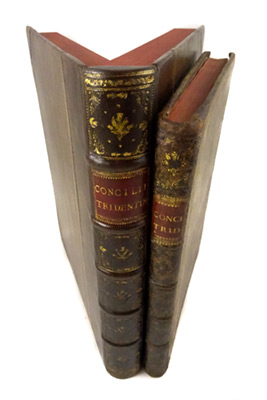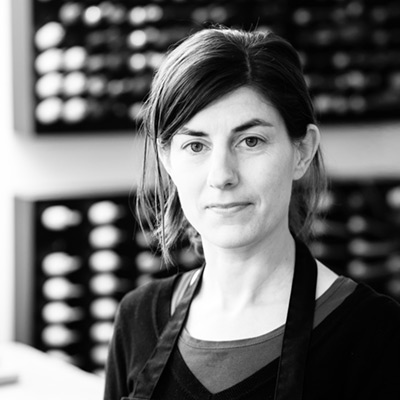Natasha Herman, restaurator en conservator van boekbanden bij Redbone Bindery in Groningen, vertelt waarom ze graag aan boeken ruikt.
Ruikt u wel eens aan boeken? Zo ja, waarom?
Graag zouden we willen weten wat u inspireert en bezighoudt bij uw werk als boekbinder.
Smelling books, along with touching, looking at and listening to books is how I earn my living. I have been restoring and conserving old books for almost 20 years now. I knew from a young age that this was the career path I would pursue, yet it wasn’t until I got a bit older that I began to understand what drove me so single-mindedly to this work. All the book lovers I know and with whom I work are drawn to books because of their content & provenance (book history scholars, readers and researchers), techniques (printers and binders), form (book artists), heritage preservation (conservators) or in pursuit of a physical connection to history or intellect (collectors, historians). None of these really speak to the heart of my own love of the book, fascinated though I am by their passion for these aspects.
No, for me, passion for my work comes from the way in which an old book engages my senses. When I smell a book, I am fed with information about where and how that book has been stored in the past as well as about its current owner’s living habits. Tactility helps me perceive parts of the book that my eyes aren’t keen enough to discern. Fingertips perceive level differences where eyes fail; lips perceive humidity and temperature differences where fingertips fail. The sound a book makes when its parts are moving tells me about its adhesive and material degradation, how much use it has had in its lifetime and how much restorative intervention it has survived.
 We humans are visual creatures by nature and I will admit that I have yet to lose the feeling of deep satisfaction I get from looking at old books. Like a favourite pair of shoes, an ancient stone staircase or worn wooden dining table, a book develops a rich layering of colour and texture with age. Maybe it’s that I can see what I can imagine I will feel, smell and hear – a synergy of sorts – that makes looking at books so pleasing. It always feels good to correctly predict something, like a sportsman seeing the jump ahead and then clearing it perfectly or a musician hitting a note in perfect sync with the rhythm.
We humans are visual creatures by nature and I will admit that I have yet to lose the feeling of deep satisfaction I get from looking at old books. Like a favourite pair of shoes, an ancient stone staircase or worn wooden dining table, a book develops a rich layering of colour and texture with age. Maybe it’s that I can see what I can imagine I will feel, smell and hear – a synergy of sorts – that makes looking at books so pleasing. It always feels good to correctly predict something, like a sportsman seeing the jump ahead and then clearing it perfectly or a musician hitting a note in perfect sync with the rhythm.
This perception sensitivity helps me as I work with my repair materials, joining old and new to create a seamless repair that moves as one would expect a book of that age to move, that it still smells and sounds as it should after conservation intervention and that the light reflects off repaired surfaces in a way that doesn’t distort colour or textural continuity.
The old book is an unlikely crossroads where a diverse group of travellers meet. Having come through a side alleyway of the senses, I enjoy the great privilege of sharing company with professionals in the preservation sciences as well as in the cultural humanities. I like nothing better than to sit in a room full of book lovers and listen while the person on my left points out the rare provenance of her copy of Mary Shelley’s Frankenstein and the person on my right explains to me the results of his vegetable tanned leather fibre analysis. But the reason I keep coming back to the workbench every day is so that I can touch, see, hear and smell this endlessly gratifying thing: the old book.
